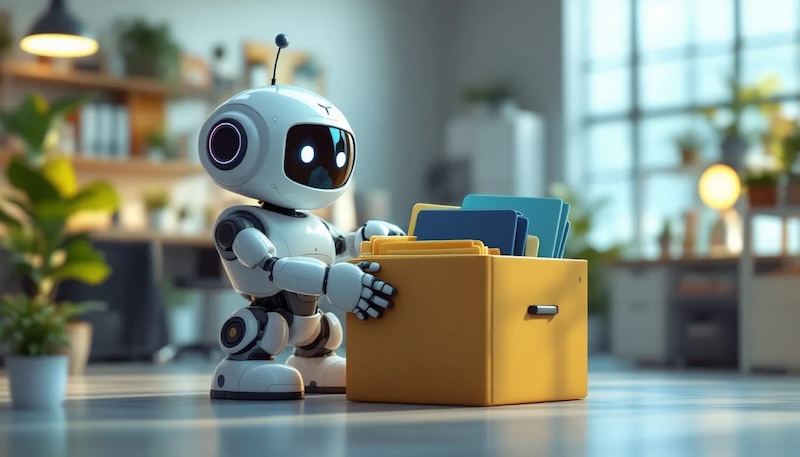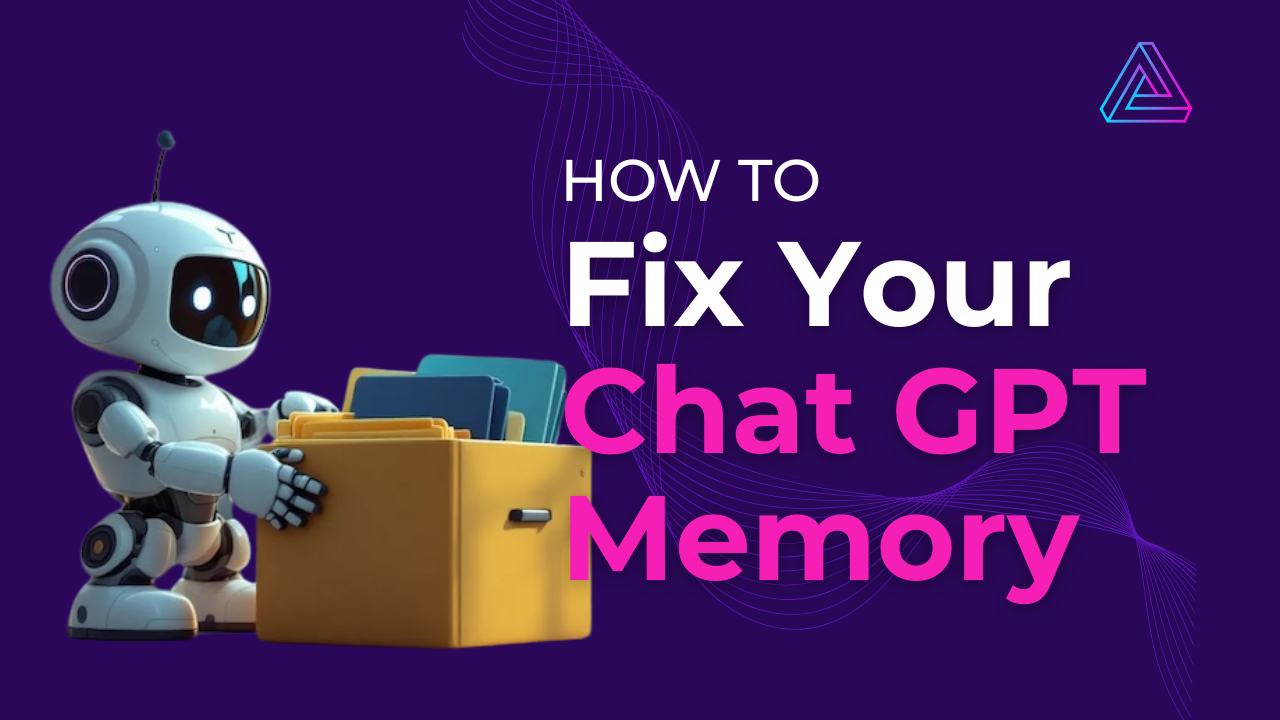Chat GPT’s memory feature is what I’ve been waiting for!
No more having to repeat myself or keep uploading conversation history.
It’s now like having a second brain, which if you’re anything like me, you desperately need (although a laundry folding robot would be a close second).
Memory allows your GPT assistant to remember things about your conversations so it can be more helpful, more personal, and more proactive.
Sounds good, right? But there will come a day, if there hasn’t already, when your Chat GPT will start acting up, giving bad answers and forgetting things.
What happened? That memory bank is overloaded.
Like any good tool, you need to know how to use it without overloading it.
Let’s look at:
- What memory is (and what it isn’t)
- When to use memory vs. files vs. custom instructions
- How to check and rationalise your existing memory
Understanding the Tools
Here’s a quick breakdown of what each tool does:
| Feature | What It Does | Best Use Cases | Limits to Keep in Mind |
| Memory | Remembers facts, preferences, patterns about you across chats | Personal habits, ongoing projects, preferences, recurring tasks | Limited space; if overloaded, GPT may become vague or confused |
| Files | Lets GPT access uploaded files during the conversation | Spreadsheets, PDFs, research, structured data | Info not remembered after the chat ends unless you save it to memory |
| Custom Instructions | A one-time, static way to tell GPT how to behave and what to know | Preferred tone, how you want responses, fixed facts | Doesn’t change unless you manually edit it |
When to Use Each One: Your Short Cut Guide
| Your Goal | Use Memory? | Use Files? | Use Custom Instructions? |
| You want GPT to remember your dog’s name, your business focus, or dietary restrictions | ✅ Yes | ❌ No | ❌ No |
| You need help analysing a spreadsheet or PDF contract | ❌ No | ✅ Yes | ❌ No |
| You want all replies to be in a casual tone with emojis | ❌ No | ❌ No | ✅ Yes |
| You want GPT to help plan a trip, based on previous destinations you enjoyed | ✅ Yes | ❌ No | ❌ No |
| You want GPT to write emails as your assistant, using a preferred structure | ✅ Yes for preferences
✅ Custom Instructions for style |
❌ No | ✅ Yes |
| You want GPT to remember complex workflows or client details | ✅ Yes (summarised!) | ✅ Yes (detailed) | ❌ No |
| You’re testing ideas in a single session (like math problems or code snippets) | ❌ No | ✅ Yes | ❌ No |

When Memory Goes Wrong
Too much memory = too much noise.
Just like having a noisy brain makes it hard to think, your GPT experiences the same type of issues when it is overloaded.
When you overload memory with unrelated details or too much specific information, GPT starts:
- Losing the plot
- Repeating itself
- Forgetting recent context
- Giving vague, weird answers
That’s when it’s time to review and prune your memory.
How to Rationalise Your Chat GPT Memory
Think of memory like a whiteboard.
It works best when it’s neat, categorised, and focused on patterns and helpful facts, not one-off requests.
✅ Step 1: Check What’s Stored
Prompt:
“What do you currently remember about me?”
This will return everything GPT has stored about you so far in a neatly summarised way.
✅ Step 2: Delete or Update Old Info
Prompt:
“Please delete anything you remember about [X]”
or
“Please update what you remember about my business. Here’s the correct info: [insert new info]”
You can also manage memory by clicking your name → Settings → Personalisation → Memory.

✅ Step 3: Summarise Patterns, Not Details
Instead of:
“Remember that I have a dog named Ralph who likes to lick everything and is a 2-year-old Poodle who sits under my desk and barks when the mailman comes.”
Say:
“Remember that I have a dog named Ralph, a Poodle, and I often work from home with him nearby.”
This avoids cognitive overload and keeps GPT sharp.

Prompts to Make Memory Work Better
Here are some useful prompts to clean up, clarify, and structure your memory:
For Memory Cleanup:
“Can you review what you currently remember about me and suggest which parts might be unnecessary or outdated?”
For Making Complex Info More Useful:
“You remember I run multiple businesses. Can you summarise them into a short list with their main focus areas, so it’s easier to refer back to?”
For Restructuring Messy Info:
“You’ve stored a lot about my routines, travel plans, and business. Could you consolidate what you remember into neat categories so you can use it more efficiently?”
For Clarifying Responses:
“When you refer to things you’ve remembered about me, can you say where that info comes from and whether it’s still current?”
Chat GPT’s Memory Philosophy: Less is More
The goal of memory is to help you get better answers faster. That means:
- Keep memory for recurring context and personal preferences
- Use files for complex one-off content like data and documents
- Use custom instructions to shape the personality and tone of your assistant
Final Checklist: Building a Smart ChatGPT Memory Setup
| Task | Action |
| Define what GPT should always know | Add to Custom Instructions |
| Store ongoing preferences or facts | Add to Memory |
| Share one-off data or docs | Upload Files |
| Declutter old memory | Use “What do you remember?” + prune |
| Refine memory structure | Ask GPT to categorise what it knows |
| Keep things updated | Review memory monthly and adjust |
TL;DR
- Use memory for context across time
- Use files for session-specific data
- Use custom instructions for personality and tone
Keep it clean, keep it useful, and check in with your assistant regularly to stay aligned.
So while it’s sometime hard to keep all our thoughts straight in our human brain, having a tidy second brain will help you get the best results when you work in tandem.

